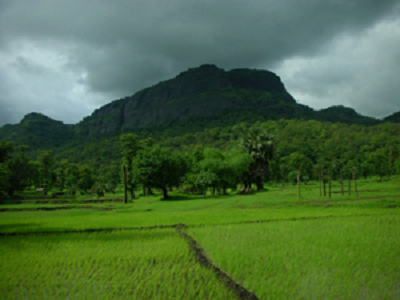


- Name of the Fort:
- Asherigad
- Difficulty Level:
- Hard
- Endurance Level:
- Medium
About Fort
- Height of the Fort:
- 1700 Feet
- Base Village:
- Varangade
- District:
- Thane
- Region:
- Palghar
- Route:
- Palghar - Kasa - Khodkona
- Distance from Pune:
- 60 Km
- Description:
- On the plains and on the right of the path one can see quite many remnants of settlements. One can also see quite many foundations with gutters cut in them. These could be to collect the rainwater during the rainy season or to lead away the overflow. The cave on the top is of medium size and having a large cave opening. But it has been carved into the rocks in such a way that the stray wind or the cold does not enter in. The back portion of the cave is very uneven. However, there are platforms made both outside and inside for the guards to take rest. The two hibiscus bushes outside the cave entrance point to the fact that rituals might have been conducted regularly by the villagers somewhere in the past. On left side of the top portion of the cave, there is a built in square water tank. There is a half buried cannon in this tank. There are two more half completed tanks here. From the top plateau, one can see the fort of Kohoj to the South West. One can also see the natural human form on the fort with the help of binoculars. Going ahead on the path one can see a huge depression the rock face and a bastion.
- About:
- History mentions that Bhojraj, a descendant of the Shilahar Dynasty built this fort. Hence it can be assumed that this fort is at least 800 years old. The Portuguese rebuilt this fort after they captured it during their rule. In 1737, Peshwa won this fort during his campaign of the Konkan and in 1818 this fort came under the British rule.
Directions for Asherigad Fort, Thane